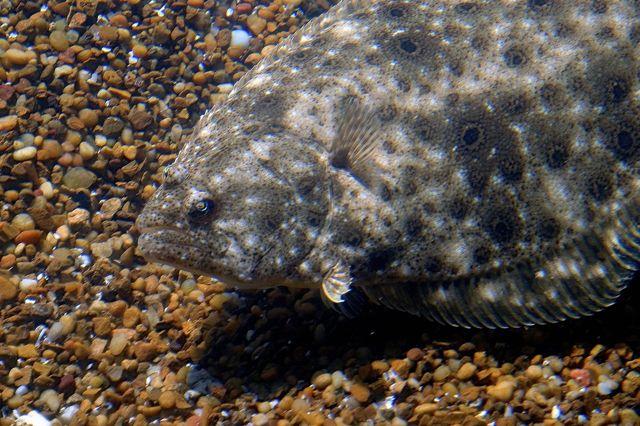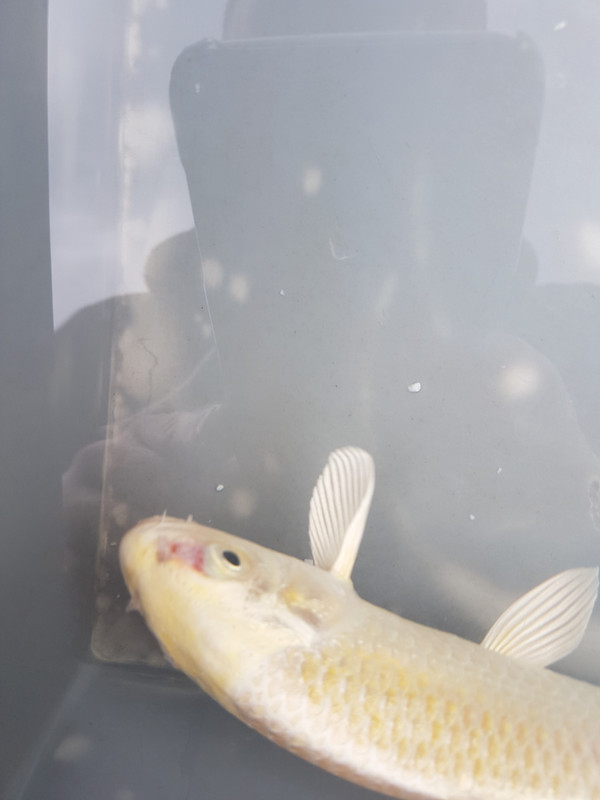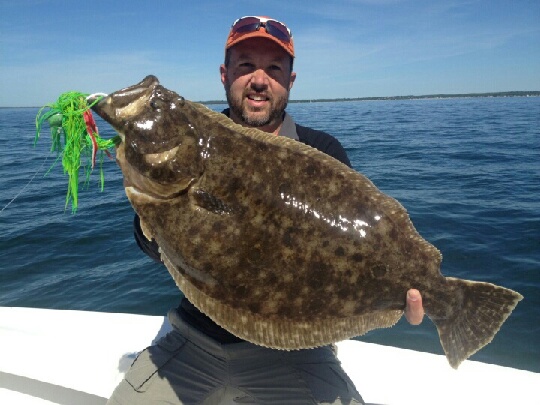

Atlantic Halibut can be found in northern waters from Virginia north to Labrador, Canada. These fish have a body shape resembling a rounded diamond and grow to lengths over six feet long. The three species of halibut are the Atlantic, Pacific, and Greenland halibut all of which live in cold deep water. Halibut are huge and easily able to reach 100 pounds with some fish reaching 500 pounds. This coloration is effective because looking towards the surface would show their white underside and looking down toward the bottom would show their brown side allowing them to blend in from both sides.

Similar in color to flounder, halibut are mottled brown on one side and white on the other which acts as a camouflage. Halibut is a name commonly used for three species of flatfish that are in the family of right-eyed flounder.

The area where they are most abundant is from Cape Fear, North Carolina to Cape Cod, Massachusetts. The summer flounder or “fluke” live in the Atlantic along the east coast from Florida To Nova Scotia. Summer flounder have a similar average weight of one to five pounds with some fish occasionally growing to over 25 pounds. Fluke have spots that look like eyes on their body and it’s usually the easiest way to identify them. Fluke does look similar to the other flounder they overlap with but they do have distinct markings. Summer flounder also known as fluke to anglers in the northeast U.S. The winter flounder can be found as far south as North Carolina but their typical range is from Delaware Bay to the Gulf of St. This flounder also grows slightly larger averaging between three and eight pounds. Winter flounder are different from the other flounder species with eyes on the right side of their body and living in colder waters further north. The gulf and southern flounder live in the Gulf of Mexico and the Atlantic ocean with North Carolina generally marking their northern boundary. These flounder species average one to five pounds but have been known to occasionally reach 20 pounds or more.
FLUKE FISH DRIVER
as well as an important economic driver commercially and recreationally. The southern and gulf flounder are popular in the U.S. Left-eyed flatfish can change colors to help them blend in with the bottom and ambush their prey. Flounder have round bodies with round fins and both eyes on the left side of their body. Calling all of these species flounder is similar to saying tuna which broadly refers to several species of tuna like bluefin or yellowfin.įlounder can be found along the Atlantic and Gulf Coasts from the Gulf of Mexico to the Gulf of Maine. The four fish species that are commonly called flounder are gulf flounder, southern flounder, summer flounder(fluke), and winter flounder. Review the commercial and recreational regulations before hitting the water.Flounder is the name used to refer to several species of flatfish that are known as demersal fish which means they live at or near the bottom.

Fisheries for fluke occur from Cape Cod to North Carolina.


 0 kommentar(er)
0 kommentar(er)
